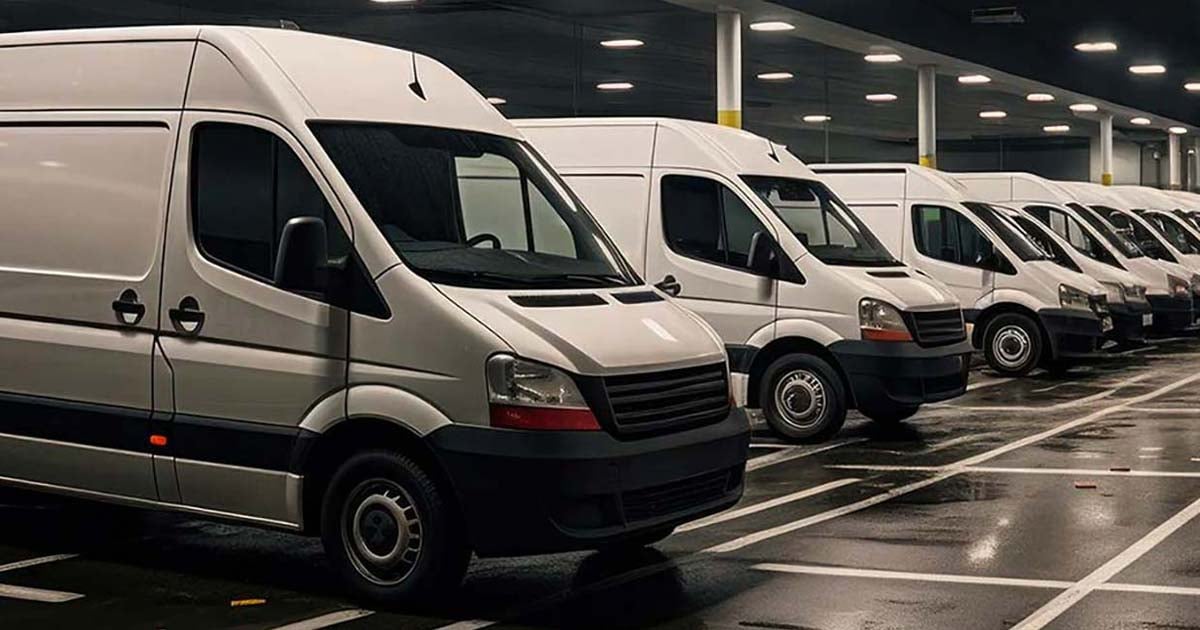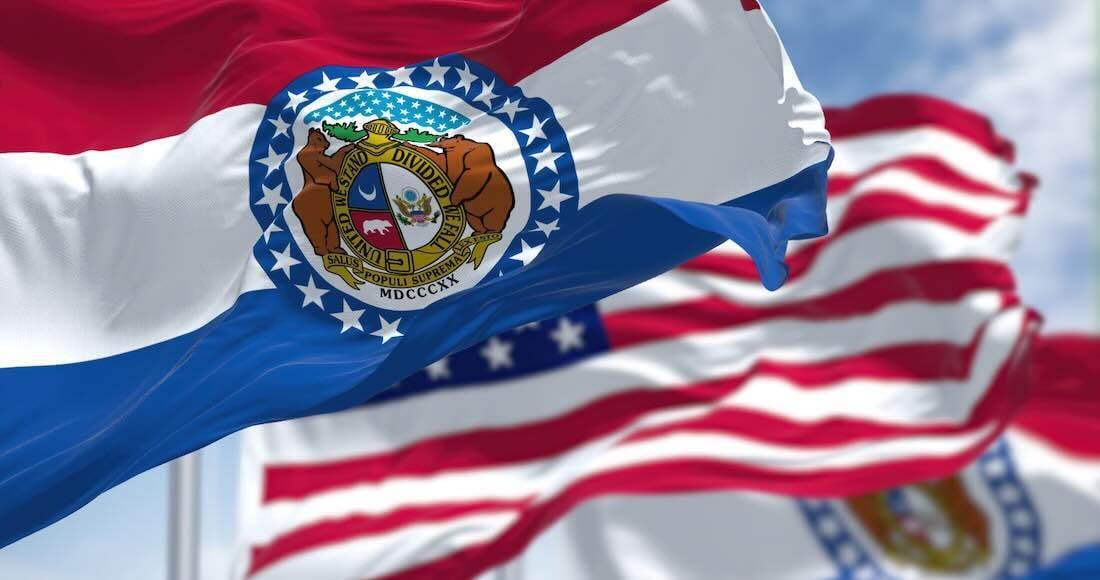May 20, 2025 | BY Dan Boaz
Kansas City Trucking Company
Kansas City trucking companies operate at the heart of America’s freight network, leveraging the city’s strategic location and infrastructure to keep goods moving. Situated near the center of the continental U.S., Kansas City has long been a crossroads for commerce.
Share this article
Today, Kansas City stands out as a multimodal logistics hub where interstate highways, railroads, air cargo, and warehousing converge. This article explores why Kansas City is pivotal in the American trucking industry, the range of trucking services offered in the region, the local logistics ecosystem, and emerging trends shaping the sector.
RAIL HUB AND INTERMODAL CONNECTIVITY
The Kansas City region is also a major rail freight nexus. In fact, Kansas City is the largest rail center in the United States by tonnage. Six of the seven Class I railroads serve the area, making it a key interchange point for rail cargo moving coast-to-coast and between Canada and Mexico (sometimes called the NAFTA or North American trade corridor). Notably, the newly merged Canadian Pacific Kansas City (CPKC) railroad chose Kansas City for its U.S. headquarters – symbolizing the city’s importance in connecting Canadian and Mexican trade. This extensive rail network underpins robust intermodal transportation in Kansas City: shipping containers arrive by train and are transferred to trucks for regional delivery, and vice versa. The presence of multiple intermodal logistics parks in the metro area attests to this multimodal strength (more on these facilities below).
TALK TO AN EXPEDITOR NOW
Get a Quote in Minutes for Your Time-Critical Freight Needs

Kansas City Logistics - The City's Strategic Advantage
Complementing road and rail, Kansas City International Airport (MCI) handles the most air cargo of any airport in a six-state region. For high-value or urgent freight, Kansas City’s air links provide another outlet, with dedicated air freight carriers and even Amazon Air operating in the area. Additionally, Kansas City sits on the Missouri River, part of the inland waterway system, which historically contributed to its development as a trade center. While barge traffic is less central to freight today, the presence of a navigable waterway underscores the city’s multimodal heritage.
In sum, Kansas City’s location and infrastructure make it a focal point of goods movement. It is often called an “inland logistics port” for its role in funneling imports, exports, and domestic shipments through the heartland. Businesses choose Kansas City for distribution because the region’s abundant transportation options (highways, rail lines, air cargo routes) reduce transit times and add flexibility. As one local logistics executive noted, being “located in the geographic center of the U.S., [the Kansas City] region is perfectly positioned in the nation’s heartland” for supply chain optimization
Services Offered by Kansas City Trucking Companies
Missouri trucking companies have cemented the region’s reputation as a central hub for U.S. freight movement, balancing a vital national role with efficient regional distribution. Through strategic geographic positioning, multimodal infrastructure, and a diversified logistics ecosystem, Kansas City has become a place where supply chains connect and consolidate. Whether it’s a coast-to-coast truckload, a temperature-sensitive delivery, or a container offloaded from a train, the city’s freight network handles it with proficiency. By serving key industries from agriculture to automotive and adapting to trends like e-commerce and intermodal growth, Kansas City continues to prove its logistics prowess.

Full Truckload
Transporting large shipments that fill an entire trailer. Kansas City trucking companies run long-haul truckload routes connecting to all corners of the U.S., capitalizing on the city’s highway grid for efficient coast-to-coast and north-south transit. Shippers use TL service for bulk moves of products—e.g. a trailer of auto parts from a Kansas City plant to an assembly factory in another state.
Beyond automotive, full truckload (FTL) service is heavily utilized across industries such as retail, agriculture, construction, and manufacturing. Kansas City’s centralized location allows companies to consolidate large volumes of freight at local distribution centers and dispatch full trailers to regional warehouses or directly to customers. Whether it’s a truckload of consumer goods heading to a Midwest retailer or a shipment of packaged food bound for the East Coast, TL shipping ensures faster delivery with minimal handling—making it a preferred option for time-sensitive or high-volume freight.

Flatbed and Specialized Hauling
Transporting oversized or open-deck freight. Flatbed trucks are common for Kansas City’s construction and agriculture needs, moving steel beams, lumber, machinery, or farm equipment that cannot be loaded in enclosed trailers. Kansas City carriers also handle heavy-haul shipments (over-dimensional loads) and bulk commodities like grain or raw materials, reflecting the region’s agricultural ties.
The city’s strong infrastructure and proximity to major industrial zones make it a strategic base for flatbed and specialized freight operations. With access to skilled operators and equipment such as step-decks, double-drops, and RGN trailers, Kansas City trucking companies can accommodate complex loads that require specific handling or permitting. This flexibility supports the movement of large-scale construction materials for regional development projects as well as the transport of seasonal agricultural equipment, reinforcing the area’s role as a key player in specialized and project-based logistics.

Final Mile Delivery
Ensuring goods reach their final destination (often the customer’s doorstep). With the rise of e-commerce and distribution centers around Kansas City, local trucking and logistics firms provide last-mile delivery services. They handle parcel distribution and home deliveries in the Kansas City metropolitan area and beyond, working as contractors for retailers or as 3PL (third-party logistics) providers to ensure online orders are delivered quickly to consumers.
To meet growing expectations for same-day and next-day delivery, these providers utilize a mix of cargo vans, box trucks, and routing technology to optimize delivery speed and efficiency. The city’s centralized location allows for cost-effective regional shipping, making Kansas City an ideal hub for final-mile operations serving surrounding states. Additionally, many logistics firms in the area have adopted advanced tracking and customer notification systems, enhancing the delivery experience and helping businesses meet the increasingly high standards of modern consumer fulfillment.

Dedicated Freight Services
Operating exclusive fleets or routes for specific shippers. Some Kansas City trucking companies run dedicated operations, meaning a fleet of trucks is assigned to a particular manufacturer or distributor’s freight. For example, an automotive supplier in Kansas City might have a dedicated carrier to shuttle parts just-in-time to the nearby assembly plant. Dedicated trucking services improve reliability and capacity for shippers with consistent volume, and Kansas City’s many industrial employers often utilize this model.
This approach offers enhanced scheduling control, reduced transit variability, and better alignment between the shipper’s production cycles and transportation resources. Dedicated trucking also fosters stronger carrier partnerships, as drivers become familiar with the shipper’s routes, facilities, and delivery protocols—resulting in fewer delays and improved service levels. In Kansas City, where regional manufacturers, food processors, and distribution centers often move freight on predictable schedules, dedicated fleets provide a dependable, efficient solution that supports just-in-time logistics and long-term supply chain stability.

Key Industries Served in the Kansas City Region
- Agriculture and Food
- Automotive
- Retail and E-Commerce
- Construction and Building Materials
- Chemicals and Petroleum
- Electronics and Technology
Agriculture and Food
The Midwest’s agricultural bounty flows through Kansas City. Trucking companies here transport grains, livestock feed, and farm products from the surrounding farm states. The region also has significant food processing and production – for example, meatpacking and packaged foods – which require refrigerated trucking and timely distribution. Cold storage warehouses are in high demand; notably, food and beverage companies accounted for 17.6% of Kansas City’s big-box warehouse leasing in 2022, underscoring the importance of food logistics. Local examples range from dairy and meat producers to snack and beverage manufacturers (e.g. Kansas City is home to Hostess Brands and several dairy processors). These products depend on both reefers and dry vans to reach grocery distribution centers nationwide.
Automotive
Kansas City is an automotive manufacturing center, with major assembly plants in the area (Ford and GM operate factories producing vehicles and parts). The trucking industry plays a critical role in this sector – delivering inbound components (engines, tires, etc.) to the assembly lines, and hauling finished vehicles and aftermarket parts out to dealerships and distribution hubs. Manufacturing in Kansas City (including automotive, aerospace and electronics) has seen robust growth – 7.6% year-over-year employment growth as of late 2024 – which translates to more freight to move. Trucks move auto parts between suppliers and plants (often via just-in-time dedicated routes), and car-carrier trucks deliver new vehicles off the production line. The automotive supply chain’s efficiency in Kansas City is a model of multimodal integration, as many parts also come in by rail or air before final truck delivery.
Retail and E-Commerce
The rise of e-commerce has made Kansas City a prime location for retail distribution centers. National retailers and online sellers have built large fulfillment centers in the region to take advantage of fast shipping times across the U.S. For example, Amazon, Walmart and other online retailers operate major distribution centers in the Kansas City area, using it as a central staging point for customer orders. Urban Outfitters (URBN) recently opened a 1.5 million sq. ft. omnichannel fulfillment center in Kansas City, KS for its brands, explicitly citing the location as “best positioned for reaching customers in the shortest amount of time.” Retail distribution generates significant LTL and truckload traffic: goods arrive in bulk to KC warehouses, then are broken into smaller shipments for stores or parcel delivery. In the last five years, the Kansas City area attracted e-commerce companies pledging to create over 10,650 jobs and occupy 17.8 million sq. ft. of warehouse space, highlighting the explosive growth of this sector. Final-mile delivery services have also expanded to handle the volume of packages bound for consumers in the region.
Construction and Building Materials
A booming construction industry in and around Kansas City drives demand for trucking of building materials. Flatbed trucks haul steel, cement, lumber, glass, and heavy equipment to support both local construction projects (commercial, residential, infrastructure) and to supply regional markets. With several large-scale developments, logistics parks, and infrastructure projects ongoing, trucking companies are busy moving everything from prefabricated building components to earthmoving machinery. Kansas City’s central location also makes it a distribution point for construction materials heading to other Midwestern cities. Specialized carriers handle oversized loads like construction cranes or industrial boilers that pass through Kansas City via highway escorts. This industry’s freight needs are diverse, often requiring flexible scheduling and specialized trailers that Kansas City trucking firms provide.
Chemicals and Petroleum
The Kansas City region, straddling Kansas and Missouri, serves as a midway distribution hub for chemicals, fertilizers, and petroleum products. Refineries in nearby areas and chemical plants rely on tanker trucks to ship fuels, industrial chemicals, and agricultural fertilizers. For instance, fertilizer produced in Kansas or chemicals from the Gulf Coast might be stored and redistributed from Kansas City. Trucking companies equipped for hazardous materials play a key role in safely moving these products. Additionally, Kansas City’s rail terminals handle tank cars of chemicals that are then transloaded to trucks for final delivery. The chemical sector’s presence is somewhat behind-the-scenes but critical – ranging from hauling anhydrous ammonia for farms to delivering cleaning chemicals or coatings for manufacturers. The extensive interstate network enables Kansas City to distribute these bulk chemicals regionally with efficiency.
Electronics and Technology
An emerging and high-value sector, electronics manufacturers and distributors also utilize Kansas City’s logistics network. The region’s electronics industry (which includes companies like Garmin, a major tech employer headquartered in the KC area) requires shipping of sensitive equipment and components. Many electronics and appliance retailers have distribution centers in the Midwest to reach customers quickly; Kansas City often serves as a consolidation point for electronics shipments heading to stores or consumers. Carriers may provide air-ride trailers or special handling for delicate electronics. Moreover, with the growth of data centers and tech manufacturing in the central US, trucking companies are moving everything from server hardware to telecom equipment through Kansas City. The tech industry’s just-in-time practices mean that trucking companies must offer reliable, trackable service – something Kansas City firms deliver through modern fleet technology (as discussed in trends below).
Trends Shaping Kansas City’s Trucking and Logistics Sector
The freight industry is constantly evolving, and Kansas City’s trucking companies are adapting to broader trends in logistics and transportation. Several current trends are particularly impactful in the Kansas City region:
E-Commerce Boom and Last-Mile Delivery
Intermodal Expansion and Rail Integration
Technology Adoption and Digital Transformation
Cold Chain Growth and Food Logistics
Post-COVID Supply Chain Strategies
Frequently Asked Questions
What is hot shot trucking, and how does it differ from full truckload (FTL) shipping?
Hot shot trucking refers to the expedited transport of smaller, time-sensitive freight using medium-duty trucks and trailers (often pickup trucks with gooseneck flatbeds). These hot shot loads are dedicated to a single customer and go directly from pickup to delivery, typically handling freight that isn’t enough to fill a big 18-wheeler. Full Truckload (FTL) shipping, by contrast, involves reserving an entire 48′ or 53′ semi-trailer for one shipper’s goods, moving straight from origin to destination without sharing space with other loads. In essence, hot shot trucking is used for urgent, smaller shipments that need immediate transport, whereas FTL shipping is used for larger shipments that can fill a whole truck, providing cost efficiency and capacity for substantial freight.
When should I use hot shot trucking instead of a full truckload service?
Use hot shot trucking when you have an urgent shipment that is relatively small or time-critical – for example, a single piece of machinery or a pallet of parts needed immediately to prevent a production delay. Hot shot services excel at fast, on-demand delivery; they can often pick up within hours and drive straight through to your facility. In contrast, if you have enough freight to fill a 48′–53′ trailer or the shipment isn’t extremely time-sensitive, a full truckload (FTL) service is more appropriate and cost-effective. FTL is ideal for large-volume loads or regular shipments that can be scheduled in advance, whereas hot shot trucking is the go-to solution for last-minute or emergency deliveries that can’t wait for the next scheduled truck.
What are typical use cases or industries that benefit from hot shot trucking?
Hot shot trucking originated in the oil and gas industry and is still heavily used there – for instance, rushing critical drilling parts or pump components to remote oilfields to avoid costly downtime. Today, many sectors use hot shots. Construction companies rely on hot shot trucks to deliver tools, equipment, or repair parts to job sites ASAP (if a crane breaks down, a replacement part might be hot-shotted in to keep the project on schedule). Manufacturing firms use hot shots to ship urgent machine parts to avoid assembly line stoppages. Agriculture operations might send farm machinery or replacement parts during harvest on a hot shot. Even retail and distribution can use hot shots to reposition inventory quickly or handle emergency store restocking. In short, any industry facing a time-sensitive freight need – from a power plant requiring a crucial valve to a hospital awaiting equipment – can benefit from the speed and dedicated service of hot shot trucking.
How fast is hot shot trucking compared to regular FTL shipping?
Hot shot trucking is generally faster for urgent loads because it provides direct, dedicated transportation. When you book a hot shot, the driver typically heads straight from pickup to delivery without intermediate stops or transfers, which speeds up transit considerably. In fact, hot shot services are a form of expedited freight designed for quick response – they often guarantee fast pickup and door-to-door delivery for time-critical shipments. By comparison, a full truckload (FTL) shipment also goes direct but usually follows standard scheduling; you might need to book it a day or more in advance, and the transit time is according to normal truck routes and driver hours. In urgent situations (especially for shorter distances or same-day delivery needs), a hot shot truck can often complete the job faster than waiting for a full-size truck’s next availability.
What types of vehicles or equipment are used in hot shot trucking (e.g., sprinter vans, pickups with trailers)?
What is a sprinter van and how is it used in expedited freight services?
A sprinter van is a type of full-size cargo van (the term “Sprinter” comes from the Mercedes-Benz Sprinter, though similar vans are made by Ford, Dodge, etc.) used for fast, small-load deliveries. In expedited freight services, sprinter vans are valued for their agility and speed – they’re more maneuverable than large trucks and can navigate city streets easily while still carrying a substantial cargo. A typical sprinter van can accommodate about 3 to 4 standard pallets of freight, with a maximum payload around 3,000 lbs. This makes them ideal for time-sensitive shipments that are too large for a car courier but too small to justify a full truck. Companies choose sprinter vans when speed counts but the shipment size is modest; for example, rushing a set of machine parts, medical supplies, or emergency components across a few states. Because of their enclosed and secure space, sprinter vans keep the cargo protected from weather, and their 24/7 availability through many hot shot or expedited carriers means they are an excellent option when you need fast, dedicated freight transport without the cost of a full tractor-trailer
What is meant by FTL (full truckload) shipping and how does it work?
Full Truckload (FTL) shipping means you’re reserving an entire truck (usually a 48′ or 53′ trailer pulled by a semi-truck) exclusively for your shipment. In FTL, your freight is the only cargo in that trailer, and the truck goes directly from the pickup point to the delivery point without stopping to load or unload other shippers’ goods. This is different from LTL (Less-Than-Truckload), where multiple shipments share trailer space. FTL shipping is used when you have enough cargo to utilize most of a trailer’s capacity or when you require a dedicated truck for speed or security reasons. A typical FTL trailer (dry van or flatbed) can carry up to about 48,000 pounds of freight in one go, which might be 24 to 26 standard pallets worth of product. To use FTL, you generally arrange the shipment through a carrier or broker, schedule a truck for a specific pickup date, and that truck will haul your load straight through to the destination. FTL is known for faster transit times (since there are no multiple stops or transfers) and lower risk of damage, as the freight isn’t handled en route. It’s essentially a dedicated freight service for a single shipper’s large load.
How do hot shot trucking costs compare to full truckload (FTL) costs?
Hot shot trucking is typically priced at a premium per mile compared to standard full truckload rates because of the expedited, dedicated nature of the service. Since a hot shot involves a smaller vehicle carrying just your load on short notice, you’re paying for that quick, exclusive service – it’s not shared with other shipments. For example, hot shot freight often commands higher rates per mile (in 2025, around $1.50 or more per mile on average, and even higher for urgent jobs), whereas a full-size truckload might have a lower per-mile rate for a long haul because it’s moving a much larger volume of freight. However, the total cost depends on the situation: if you only have a small pallet or one machine to ship, using a hot shot could actually be cheaper in absolute terms than paying for an entire 53′ truck that mostly runs empty. Full truckload costs scale with distance, weight and market demand – you pay for the whole truck, so it’s cost-effective when you can fill it. In summary, per unit of freight, hot shot can be more expensive, but it fills the need for speed and dedicated service; FTL is more economical for large shipments but requires that volume. Shippers will often weigh urgency vs. cost: if time is critical, the extra cost of a hot shot is justified, whereas for big loads or less urgent moves, a standard FTL is more cost-efficient.
How can I get a freight quote for hot shot trucking or FTL shipping?
To get a freight quote, you can reach out to a broker or logistics carrier that offers hot shot and FTL services, or use an online freight marketplace. Many providers have online quote request forms – you’ll need to input the pickup and delivery ZIP codes, the shipment details (weight, dimensions, pallet count or piece count), the type of service you need (hot shot, dry van FTL, flatbed, etc.), and the timing requirements. You can also call the carrier’s dispatch or sales line to discuss your needs directly; often for hot shots, a phone call can get the quickest response since these are urgent moves. Be prepared with details: what exactly you’re shipping, if it requires any special handling or equipment, and how fast it needs to arrive. With that information, the carrier or broker will provide a freight quote (a price for the shipment). Many modern freight companies offer instant pricing tools for full truckload quotes or hot shot deliveries, making it easy to compare options. Remember that hot shot quotes may include a premium for fast service, and FTL quotes might vary depending on current market rates for trucks on that lane. It’s wise to get quotes from a couple of sources if possible, and ensure the quote includes all fees (fuel surcharge, any accessorial charges for special requirements, etc.). Once you accept a quote, you’ll book the shipment and the provider will schedule the truck.
What factors affect the cost of a hot shot trucking service?
Several factors influence hot shot trucking rates. Distance is a primary driver – longer hauls cost more, calculated on a per-mile basis, which can fluctuate with fuel prices and demand. Urgency or service speed is another factor: if you need a driver to start immediately in the middle of the night or guarantee a very tight delivery window, there may be an expediting fee or higher rate (hot shots are often premium services by nature). Load size and weight matter as well; while hot shots cater to smaller loads, a heavier load that pushes the limits of a hot shot trailer’s capacity might cost more (both for fuel and because it might limit the driver from taking any backhaul). Additionally, location and routing affect cost – if the pickup or drop-off is in a remote area far from major highways, the rate could be higher to cover the extra time to get there. Market conditions like truck availability in your region also play a role (when demand is high and few hot shot trucks are free, prices can rise).

